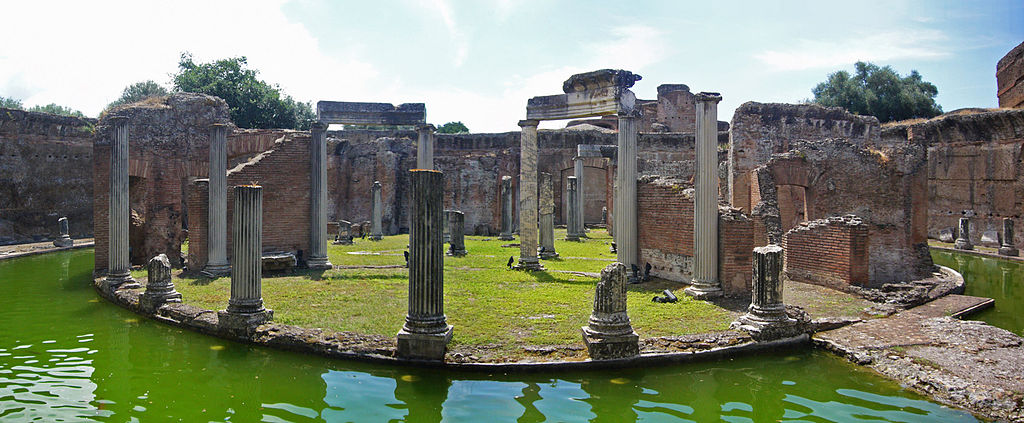Author: Marian Vermeulen
No archeological tour of Italy would be complete without a visit to Tibur, modern Tivoli. The city has a long history, dating back to the 13th century B.C., when colonists from Alba Longa settled on the site. Tibur held a tumultuous relationship with Rome before it fell to its southern neighbors. Rome granted citizenship to Tibur in 90 B.C., after which the city became a favorite for wealthy Romans. Its streets housed luxurious villas for many famous individuals, including the poet Horace, and possibly Catullus and Statius as well, Maecenas, Emperor Augustus, and Zenobia of Palmyra, among others.
However, the most famous villa at Tibur belonged to the Emperor Hadrian. His sprawling residence was built to house any number of politicians and so continue the business of state outside of Rome, as well as being a private getaway for the emperor, who, despite his public charisma, remained something of a recluse. Today, Tibur houses a number of magnificent archaeological structures, including segments of Hadrian’s spectacular 200 acre villa, of which only a portion has been excavated.
Founding Myths
Despite the relatively mundane official history of Tibur, the Romans, of course, enjoyed a more colorful version. According to Cato the Elder, Catillus the Arcadian, son of Amphiaraus founded the city. Amphiaraus had been a highly honored seer and king of Argos. The legends tell of a fateful attack on Thebes, immortalized by Aeschylus in 467 B.C. in his tragic play “Seven Against Thebes.” Upon learning of his terrible patricide and marriage to his mother, the infamous Oedipus blinded himself and cursed his two sons, dooming them to divide the kingdom through violence. The sons, Eteocles and Polynices, attempted to subvert the curse by agreeing to take turns ruling Thebes. However, after his first year of rule, Eteocles refused to hand the throne to his brother.
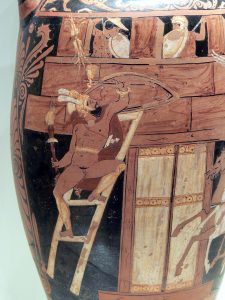
Scene from The Seven against Thebes by Aeschylus. By Caivano Painter – Wolfgang Sauber (User:Xenophon), own work, 2008-04-10. Image renamed from Image:7 gegen Theben.jpg, CC BY-SA 3.0.
Polynices subsequently went to Argos. He bribed the wife of Amphiaraus, Eriphyle, with a necklace that had belonged to the daughter of Aphrodite. In exchange, she convinced her husband to join Polynices’ campaign against his brother. Despite knowing that the attack would fail, Amphiaraus fought bravely, but was eventually slaughtered along with the others. The Tiburtines believed that Amphiaraus had a son named Catillus who had accompanied him to Thebes. Catillus managed to escape the slaughter, and fled to Italy, where he established the colony of Tibur.
Conflict with Rome
During Etruscan times, Tibur was a Sabine city. Though initially friendly with Rome, in 361 B.C., the city allied itself with the invading Gauls. After the Romans defeated the Gallic invaders before the Colline Gate of Rome, the Gauls fled past Tibur. As they did so, some Tiburtines came out to watch, and pursuing Romans killed them as they passed. Because of this, consul Caius Poetilius Balbus celebrated a triumph over both the Gauls and the Tiburtines. The Tiburtines merely laughed at his triumph, asking when he had ever faced them in open battle.
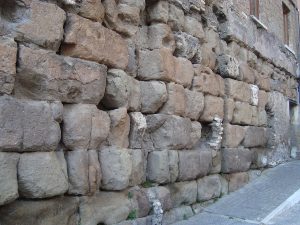
Details of the antique walls of the city of Tivoli dating from the 4th century BC. By LPLT – Own work, CC BY-SA 3.0.
Accordingly, soon after, a group of Tiburtines marched on Rome, but they had been hoping for a surprise attack. The Romans were alerted, and soon attacked, driving the Tiburtines to flight. In the campaign that followed, Rome soundly defeated Tibur, and took several cities from them before the two cities negotiated a truce. In 338 B.C., Tibur officially became a part of Roman territory. Sections of the city’s defensive walls from this era remain in modern Tivoli.
Prophecy of the Tiburtine Sibyl
One of Tibur’s most famous individuals was the Tiburtine Sibyl, a respected oracle who contributed to the Sibylline Oracles of Rome. Ruins of her temple exist to this day. Ancient writers told of her encounter with Augustus, where he asked her if he should be worshipped as a god. Later Christian writers particularly enjoyed recounting this tale, and added that in reply she told him of a vision of Mary with the infant Jesus, sitting in prominence in the city of Rome.
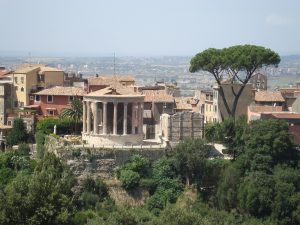
General view of the temple of Vesta (left) and the temple of Sibyl (right) in Tivoli. By LPLT – Own work, CC BY-SA 3.0.
The most famous piece by the Tiburtine Sibyl was her graphic and detailed prophecy of the end of days. It was a bestseller, and a number of scholars re-copied it throughout the medieval era, with probable errors and misinterpretations. However, it appears that the prophecy came to the sibyl as dream. In it, she saw nine suns in the sky, which represented nine generations of mankind. Each sun appeared more ugly and bloodstained than the one before it, and following the last sun came judgment day.
What to See Here?
Few places in the world are able to capture the extravagant and monumental extremes of Roman luxury like Tivoli. The area is simply bursting with magnificent sites. The most famous is without doubt Hadrian’s Villa, built in the first couple of decades of the second century AD. By 128 AD, it seems the 250-acre villa complex had become Hadrian’s official residence, connected to the capital via an efficient postal network and able to accommodate any number of emissaries or guests an emperor might have to entertain. Much of the villa remains unexcavated, but what is visible is truly magnificent. The remains of the Island Villa capture what was most likely the most beautiful pat of the emperor’s grand design, while the vast complex of baths, fountains, statues and even a theatre pay testament to the imperial scale of the project.
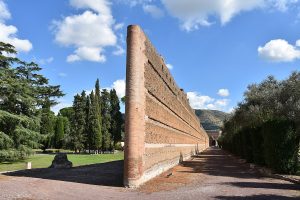
Tivoli – Wall of the Poikile of Hadrian’s Villa. By Patrik Kunec – Own work, CC BY-SA 4.0.
As well as Hadrian’s Villa, Tivoli is also home to the Temple of Vesta. Idyllically situated atop the ancient acropolis in Tivoli’s countryside, this circular temple dates to the first century BC. As is visible from an inscription on the temple’s architrave, one Lucius Gellius is to be credited either for constructing or restoring the temple. In its near vicinity lies another rectangular temple, often attributed to the Tiburtine Sibyl, while just outside the boundary of the ancient city lie the ruins of the expansive Sanctuary of Hercules the Winner (dating from the second century BC) and Temple of the Tosse (probably dating to the fourth century AD).
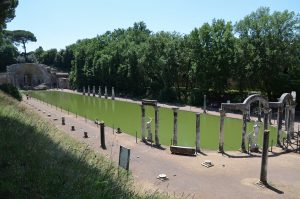
The Canopus, Hadrian’s Villa, Tivoli. By Carole Raddato from FRANKFURT, Germany. CC BY-SA 2.0.
Tivoli in the Timetravlerome app
Tivoli and Hadrian’s villa are covered in the Timetravelrome app: all main monuments in the Hadrian’s villa are mapped and described.

Sources: Cato the Elder, Origines – quoted by Gaius Julius Solinus; Livy, History of Rome; Cassius Dio, Roman History; Historia Augusta, Life of Hadrian.
Header image: PanoramaMaritimeTheater, photo by – Own work, licensed under CC BY 3.0
